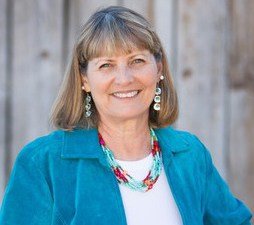Why is it that some people stomp their feet and swear that the beef industry is anti the environment? Please, the facts……
For example,
The National Cattlemen’s Beef Association has been honoring Environmental Stewardship for 17 (yes, SEVENTEEN) years, via the Environmental Stewardship Award Program (ESAP). According to a report in the January 2008 issue of BEEF magazine, this year there were six regional winners. In the selection committee’s words, “The six regional winners have made extensive efforts to work closely with their local communities and government agencies.”
Let me review these six operations:
1. From Pennsylvania: Paul and Beth Wingard work the family farm, running 70 cow-calf pairs and 10 yearlings on 125 acres. The Wingards have worked with NRCS and the Fish and Wildlife Service; they participate in Pennsylvania Project Grass, Clarion County Graziers, Western Pennsylvania Conservancy, local 4-H clubs, and have established partnerships with the Pennsylvania Game Commission and the Farm/Game Project.
2. From Alabama: the Dee River Ranch is a family-owned operation that includes 10,000 acres. Approximately 2,500 have been set aside for forages and cattle; 4,000 have been entered in the Conservation Reserve Program (CRP); 3,500 are planted in corn, wheat, and soybeans. Mike Dee and his sister work with NRCS and Alabama’s Cooperative Extension System, and the Alabama Rural Medicine Program.
3. From Missouri: the Oak Knoll Ranch is a 100 head cow-calf operation on 360 owned acres and 120 leased acres. Leon and Helen Kreisler work with the Department of Conservation and NRCS, and became one of the organizing members of the Advanced Graziers Group. They are actively involved in preserving wildlife habitat.
4. From Oregon: the Roaring Springs Ranch is a cow-calf/stocker operation with more than 6,200 cows and calves, 150 horses, 2,500 acres of meadow hay and 1,200 acres of alfalfa. The ranch also leases land from BLM, the state and other private owners. The ranch “initiated and implemented the nationally recognized Catlow Valley Fishes Conservation Agreement,” in addition to working with BLM on prescribed burn practices that have improved wildlife and watershed habitat.
5. From California: the Yolo Land & Cattle Co., a family-owned limited partnership, is a cow-calf/stocker operation on over 12,000 acres of deeded and leased land. The Stone family has implemented a vegetative managedment plan, rotational grazing, grazing on Conservation Reserve Program lands, and invasive weed control programs. They work with NRCS, U.C. Davis, and the USDA Agricultural Research Service.
6. From Kansas: the Alexander Ranch is 7,000 acre, custom grazing operation with 500-700 cow-calf pairs or 2,500 yearlings (on a rotational grazing program). The ranch works with NRCS and the Environmental Quality Incentives Program and provides and maintains a broad wildlife and aquatic species habitat.
These are the stars, perhaps, of this stewardship program, BUT these operations are NOT unique. The average American truly has little concept of how many environmentally-sensitive and conscientious farmers/ranchers are working to preserve THEIR own habitat and lifestyle, not just to be ‘globally’ wise, but because it is in their blood, in their very nature as nurturers of life and land.



